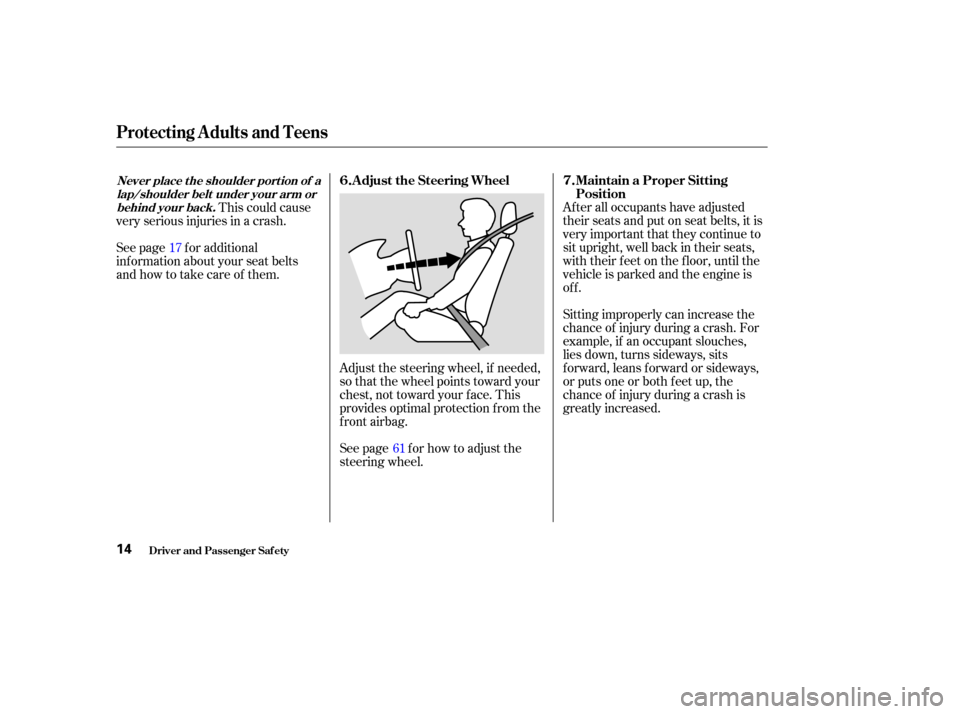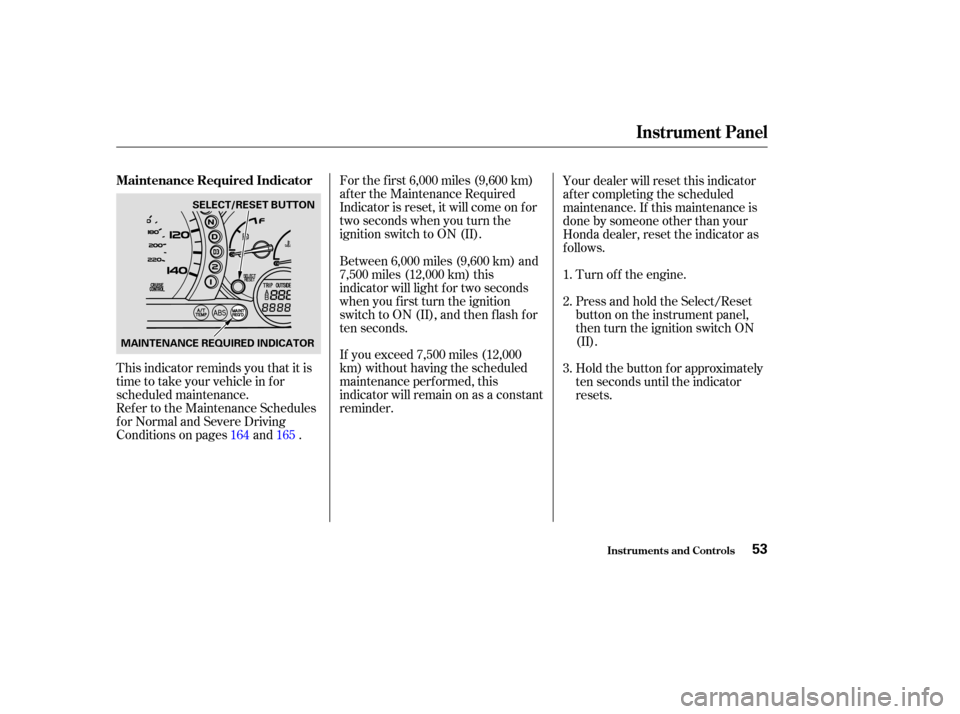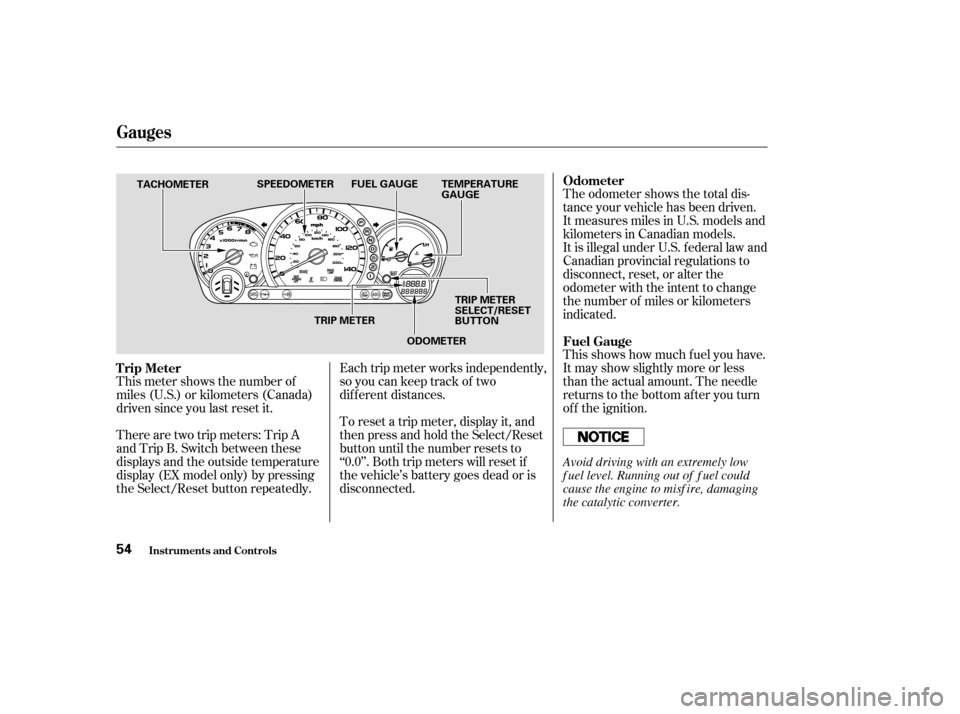engine HONDA PILOT 2004 1.G Owners Manual
[x] Cancel search | Manufacturer: HONDA, Model Year: 2004, Model line: PILOT, Model: HONDA PILOT 2004 1.GPages: 248, PDF Size: 2.98 MB
Page 1 of 248

2004 Pilot Online Reference Owner's Manual
Use these links (and links throughout this manual) to navigate through this reference.
For a printed owner's manual, click on authorized manuals or go to www.helminc.com.
Contents
Owner's Identification Form
Introduction ........................................................................\
............................................................................. i
A Few Words About Safety ........................................................................\
.................................................. ii
Your Vehicle at a Glance ........................................................................\
....................................................... 2
Driver and Passenger Safety ........................................................................\
............................................... 5
P roper use and care of your vehicle's seat belts, and Supplemental Restraint System.
Instruments and Controls........................................................................\
...................................................45
Instrument panel indica tor and gauge, and how to use dashboard and steering column controls.
Comfort and Convenience Features........................................................................\
................................. 81
How to operate the climate control system, the audio system, and other convenience features.
Before Driving ........................................................................\
....................................................... ..............123
What gasoline to use, how to break-in your new vehicle, and how to load luggage and other cargo.
Driving........................................................................\
...................................................................................135
The proper way to start the engine, shift the tr ansmission, and park, plus towing a trailer.
Maintenance........................................................................\
....................................................... ..................159
The Maintenance Schedule shows you when you need to take your vehicle to the dealer.
Taking Care of the Unexpected........................................................................\
.......................................195
This section covers several problems motorists someti mes experience, and how to handle them.
Technical Information........................................................................\
....................................................... 215
ID numbers, dimensions, capaciti es, and technical information.
Warranty and Customer Relations (U.S. and Canada)...................................................................... 229
A summary of the warranties covering your new Honda, and how to contact us.
Index ........................................................................\
......................................................................................... I
Service Information Summary
A summary of information you need when you pull up to the fuel pump.
Page 18 of 248

Adjust the steering wheel, if needed,
so that the wheel points toward your
chest, not toward your f ace. This
provides optimal protection f rom the
f ront airbag.
See page f or how to adjust the
steering wheel.After all occupants have adjusted
their seats and put on seat belts, it is
very important that they continue to
sit upright, well back in their seats,
with their feet on the floor, until the
vehicle is parked and the engine is
of f .
Sitting improperly can increase the
chance of injury during a crash. For
example, if an occupant slouches,
lies down, turns sideways, sits
forward, leans forward or sideways,
or puts one or both f eet up, the
chance of injury during a crash is
greatly increased.
This could cause
very serious injuries in a crash.
See page f or additional
inf ormation about your seat belts
and how to take care of them.
61
17
Protecting A dults and Teens
Adjust the Steering Wheel
Maintain a Proper Sitting
Position
6.
7.
Driver and Passenger Saf ety
Never place t he shoulder port ion of a
lap/shoulder belt under your arm orbehind your back.
14
Page 27 of 248

This indicator alerts you
that the passenger’s side
airbag has been automatically shut
of f . It does mean there is a
problem with your side airbags.
To reduce the risk of injury f rom an
inf lating side airbag, your vehicle has
an automatic cutoff system for the
passenger’s side airbag.
Although Honda does not encourage
children to ride in f ront, this system
is designed to shut of f the side
airbag if a child leans sideways and
the child’s head is in the side airbag
deployment path.
If a short adult leans sideways, or a
larger adult slouches and leans
sideways into the side airbag
deployment path, the system may
also shut off the side airbag.
The SRS indicator alerts
you to a potential problem
with your f ront airbags, side airbags,
or f ront seat belt tensioners (see
page ).
When you turn the ignition to ON
(II), this indicator will light brief ly
then go out. This tells you that the
system is working properly.
If the indicator comes on at any
other time, or does not come on at all,
you should have the system checked
by your dealer. For example:
If the SRS indicator does not come
on after you turn the ignition
switch to ON (II).
If the indicator stays on after the
engine starts.
If the indicator comes on or
flashesonandoff whileyoudrive. If you see any of these indications,
the airbags and seat belt tensioners
may not work properly when you
need them.
48
Additional Inf ormation About Your Airbags
Driver and Passenger Saf ety
How the Side Airbag Of f
Indicator Works
How the SRS Indicator Works
not
23
Ignoring the SRS indicator light
can result in serious injury or
death if the airbag systems, or
tensioners do not work properly.
Have your vehicle checked by a
dealer as soon as possible if
the SRS indicator alerts you to
a possible problem.
Page 46 of 248

Your vehicle’s exhaust contains
carbon monoxide gas. You should
have no problem with carbon
monoxide entering the vehicle in
normal driving if you maintain your
vehicle properly.High levels of carbon monoxide can
collect rapidly in enclosed areas,
such as a garage. Do not run the
engine with the garage door closed.
Even with the door open, run the
engine only long enough to move the
vehicle out of the garage.
Have the exhaust system inspected
f or leaks whenever:
The vehicle is raised f or an oil
change.
You notice a change in the sound
of the exhaust.
The vehicle was in an accident
that may have damaged the under-
side. With the tailgate open, air flow can
pull exhaust gas into your vehicle’s
interior and create a hazardous
condition. If you must drive with the
tailgate open, open all the windows
and set the heating and cooling
system/climate control system as
shown below.
If you must sit in your parked vehicle,
even in an unconf ined area, with the
engine running, adjust the heating
and cooling system/climate control
system as f ollows:
Select the Fresh Air mode.
Select the mode.
Turn the f an on high speed.
Set the temperature control to a
comfortable setting.
1.
2.
3.
4.
Carbon Monoxide Hazard
Driver and Passenger Saf ety42
Carbon monoxide gas is toxic.
Breathing it can cause
unconsciousness and even kill
you.
Avoid any enclosed areas or
activities that expose you to
carbon monoxide.
Page 52 of 248

This indicator comes on when you
turn the ignition switch to ON (II). If
it comes on at any other time, it
indicates that the passenger’s side
airbag has automatically shut off.
For complete inf ormation, see page.
See page .
If this indicator comes on when the
engine is running, the battery is not
being charged. For more inf ormation,
see page . The engine can be severely damaged
if this indicator f lashes or stays on
when the engine is running. For
more inf ormation, see page .
This indicator comes on when you
turn the ignition switch to ON (II). If
it comes on at any other time, it
indicates a potential problem with
your f ront airbags. This indicator will
also alert you to a potential problem
with your side airbags, passenger’s
side airbag automatic cutoff system
or automatic seat belt tensioners.
For complete inf ormation, see page
.
The instrument panel has many
indicators to give you important
inf ormation about your vehicle.
This indicator comes on when you
turn the ignition switch to ON (II). It
reminds you and your passengers to
f asten your seat belts. A beeper also
sounds if you have not f astened your
seat belt.
If you continue driving without
f astening your seat belt, the beeper
sounds and the indicator f lashes
again at regular intervals. If you turn the ignition switch to ON
(II) bef ore f astening your seat belt,
the beeper sounds and the indicator
f lashes. If you do not f asten your
seat belt bef ore the beeper stops, the
indicator stops f lashing but remains
on. 207
206
206 2323
Inst rument s and Cont rols
Malf unction Indicator
Lamp
L ow Oil Pressure
Indicator
Charging System
Indicator Supplemental Restraint
System Indicator
Side Airbag Of f Indicator
Seat Belt Reminder
Indicator
Instrument Panel
48
Page 53 of 248

This indicator has two f unctions: This indicator normally comes on f ora f ew seconds when you turn the
ignition switch to ON (II), and when
the ignition switch is turned to
START (III). If it comes on at any
other time, there is a problem in the
ABS. If this happens, have your
vehicle checked at a dealer. With
this indicator on, your vehicle still
has normal braking ability but not
anti-lock. For complete inf ormation,
see page .
Itcomesonwhenyouturnthe
ignition switch to ON (II). It is a
reminder to check the parking
brake. Driving with the parking
brake not f ully released can
damage the brakes and tires.
A chime also sounds if you try to
drive with the parking brake on.
If it remains lit af ter you have f ully
released the parking brake while
the engine is running, or if it
comes on while driving, there
could be a problem with the brake
system. For complete inf ormation,
see page . This indicator also blinks several
times when you turn the ignition
switch f rom ON (II) to ACCESSORY
(I) or LOCK (0). This indicator comes on f or a f ew
seconds when you turn the ignition
switch to ON (II). It will go of f if you
have inserted a properly-coded
ignition key. If it is not a properly-
coded key, the indicator will blink
and the engine will not start (see
page ).
1.
2.
145
208 62
Inst rument s and Cont rols
Parking Brake and Brake System
Indicator
Anti-lock Brake System (ABS)
Indicator Immobilizer System
Indicator
Instrument Panel
49
U.S. Canada
U.S. Canada
Page 56 of 248

This indicator monitors the
temperature of the automatic
transmission f luid. It comes on f or a
f ew seconds when you turn the
ignition switch to ON (II). If it comes
on while driving, it indicates the
transmission fluid temperature is too
high. Pull to the side of the road
when it is saf e, shif t to Park, and let
the engine idle until the light goes
out.This indicator normally comes on f or
a f ew seconds when you turn the
ignition switch to ON (II). If this
indicator comes on at any other time,
there is a problem in the 4WD
system. Have your vehicle checked
by a dealer.
If the indicator blinks while driving,
pull to the side of the road when it is
saf e, shif t to Park, and let the engine
idle until the indicator goes out.
Inst rument s and Cont rols
A/T Temperature
Indicator
VTM-4 Indicator
Instrument Panel
52
Continuing to drive with the VTM-4
indicator blinking may cause serious
damage to the 4WD system.
Continuing to drive with the A/T
Temperature indicator on may cause
serious damage to the transmission.
Page 57 of 248

For the f irst 6,000 miles (9,600 km)
af ter the Maintenance Required
Indicator is reset, it will come on f or
two seconds when you turn the
ignition switch to ON (II).
Ref er to the Maintenance Schedules
f or Normal and Severe Driving
Conditions on pages and . This indicator reminds you that it is
time to take your vehicle in for
scheduled maintenance. If you exceed 7,500 miles (12,000
km) without having the scheduled
maintenance perf ormed, this
indicator will remain on as a constant
reminder.Your dealer will reset this indicator
af ter completing the scheduled
maintenance. If this maintenance is
done by someone other than your
Honda dealer, reset the indicator as
f ollows.
Turn of f the engine.
Press and hold the Select/Reset
button on the instrument panel,
then turn the ignition switch ON
(II).
Between 6,000 miles (9,600 km) and
7,500 miles (12,000 km) this
indicator will light f or two seconds
when you first turn the ignition
switch to ON (II), and then flash for
ten seconds.
Hold the button f or approximately
ten seconds until the indicator
resets.
165
164 1.
2.
3.
Instrument Panel
Inst rument s and Cont rols
Maintenance Required Indicator
53
MAINTENANCE REQUIRED INDICATORSELECT/RESET BUTTON
Page 58 of 248

Each trip meter works independently,
so you can keep track of two
dif f erent distances.The odometer shows the total dis-
tance your vehicle has been driven.
It measures miles in U.S. models and
kilometers in Canadian models.
It is illegal under U.S. f ederal law and
Canadian provincial regulations to
disconnect, reset, or alter the
odometer with the intent to change
the number of miles or kilometers
indicated.
To reset a trip meter, display it, and
then press and hold the Select/Reset
button until the number resets to
‘‘0.0’’. Both trip meters will reset if
the vehicle’s battery goes dead or is
disconnected.
There are two trip meters: Trip A
and Trip B. Switch between these
displays and the outside temperature
display (EX model only) by pressing
the Select/Reset button repeatedly. This meter shows the number of
miles (U.S.) or kilometers (Canada)
driven since you last reset it. This shows how much f uel you have.
It may show slightly more or less
than the actual amount. The needle
returns to the bottom after you turn
of f the ignition.
Trip Meter Odometer
Fuel Gauge
Gauges
Inst rument s and Cont rols54
TACHOMETER
SPEEDOMETER FUEL GAUGE TEMPERATURE
GAUGE
TRIP METER
SELECT/RESET
BUTTON
TRIP METER
ODOMETER
Avoid driving with an extremely low
f uel level. Running out of f uel could
cause the engine to misf ire, damaging
the catalytic converter.
Page 59 of 248

This shows the temperature of the
engine’s coolant. During normal
operation, the pointer should rise
from the bottom white mark to about
the middle white mark. In severe
driving conditions, such as very hot
weather or a long period of uphill
driving, the pointer may rise to the
upper white mark. If it reaches the
red (Hot) mark, pull saf ely to the
side of the road. Turn to page f or
instructions and precautions on
checking the engine’s cooling
system.The temperature sensor is in the
f ront bumper. Theref ore, the temper-
ature reading can be af f ected by heat
ref lection f rom the road surf ace, en-
gine heat, and the exhaust f rom
surrounding traf f ic. This can cause
an incorrect temperature reading
when your speed is under
19 mph (30 km/h). This indicator displays the outside
temperature in Fahrenheit (U.S.
models) or Centigrade (Canadian
models). To see the outside
temperature, press and release the
Select/Reset button until the
temperature is displayed.
The sensor delays the display update
until it reaches the correct out side
temperature, this may take several
minutes.In certain weather conditions,
temperature readings near f reezing
(32°F, 0°C) could mean that ice is
f orming on the road surf ace.
204On EX model
Temperature Gauge Outside Temperature Indicator
Gauges
Inst rument s and Cont rols55